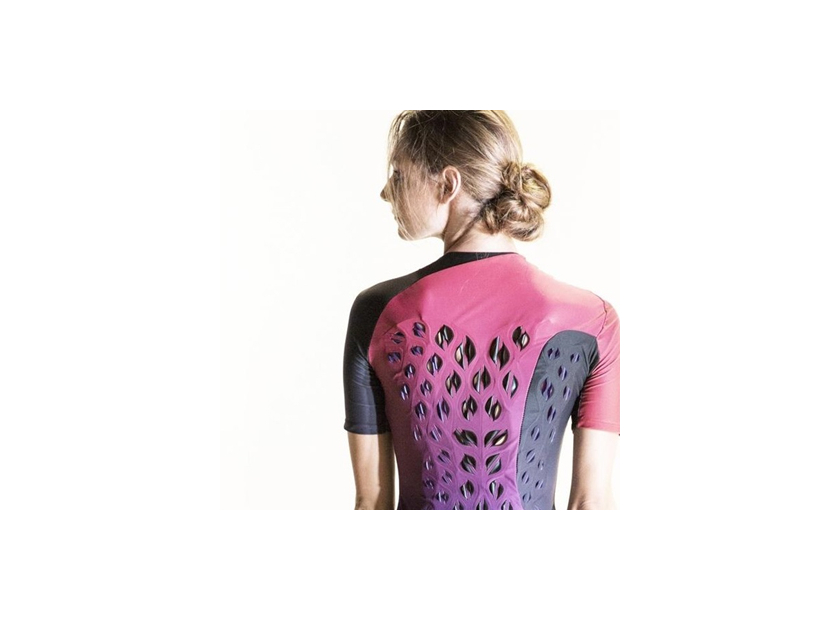Subcultured Couture- How Fashion is Utlizing Microorganisms
These days, most people are aware that bacteria have benefits to our health and that not all bacteria are to be feared. Probiotic packed yogurts proudly proclaim their rich source of beneficial microbes. Health conscious Americans have taken the time to learn how to balance their intestinal flora based on research showing links between your gut and your mood. Most are now aware that the perfectly aged sharp cheddar they are enjoying with their 2012 Cabernet taste so exquisite because of the bacteria present within the foods. As a whole, we have become ambivalent to the fact that bacteria are used in our foods to either alter the taste in some way or to improve the health benefit of the food itself. However, while we welcome microbacteria into our food, how many would welcome them into their clothing?
 Bacillus subtillis nattois commonly used in Japanese cooking and now in bioengineered clothing.
Bacillus subtillis nattois commonly used in Japanese cooking and now in bioengineered clothing.It sounds disgusting, right? Millions of bacteria, purposely "painted" on to your shirt. What reasoning could there be to contaminate your clothing? Well, bio-engineers have done just that and someday, you may thank them for your new sports team uniform.
Researchers at MIT, the Massachusetts Institute of Technology, have recently introduced a project dubbed bioLogic. They introduced their project to the public with a cinematic short movie of a dancer wearing a scaled body suit that looks more sci-fi than science. After the dancer has begun his performance, sweat beads on his brow and the camera pans to his back which is concealed beneath an array of small reptilian scales. This is when you realize that the scales, without manipulation from the dancer are opening, creating a phalanx of ventilation slits along his back.
Biologic from Tangible Media Group on Vimeo.
To do this, the MIT researchers coated either side of the flap with Bacillus subtilis natto which is a Gram-positive, catalase positive, facultative aerobic bacteria commonly found in the gastrointestinal tract of ruminants and humans. This bacteria behaves much like pine cones in that they will expand or contract when exposed to moisture. The more moisture in the air surrounding them, the bigger the bacteria will expand (sometimes up to fifty percent larger.) Wen Wang, the lead author on the project, explains how the cells are able to alter the flaps on the shirt with this expansion and contraction. "These cells are so strong that they can induce bending of the substrate they are coated on."
 As the wearer sweats, the hydromorphic bacteria on the slits expand, opening the slits, creating ventilation.
As the wearer sweats, the hydromorphic bacteria on the slits expand, opening the slits, creating ventilation.The team did not stop with just a shirt. They moved forward and produced a running shoe with the same concepts in mind, applying the flaps where sweat is most likely to occur. Unlike most running shoes, which have ventilation meshes on the top and side of the shoes, they applied the flaps near the bottom of the shoe in hopes that it could one day be useful in preventing warts and other sweat related ailments.
While a small step, Lining Yao, the project's lead researcher, looks to the future of bioengineering and furthering the concept of "programmable matter." Yao states that she believes designers and engineers need only look to nature for inspiration. "With biology, you can start to imagine functions that aren’t available with electronics." While difficult to control, biologic reactions could be utilized in the future for an extensive number of uses. Yao imagines that some day soon, designers will be able to harness bioluminescent bacteria to allow shirts to glow in the dark providing added safety to runners, weaving bio-printed fabrics that could purify polluted air or even fabrics that would complete negating sweat related odors.
"We're just at the beginning," Yao says. Bioengineered materials could be used for more than just clothing in the near future. Just as the discovery of penicillin saw the start of new and wondrous concepts in microbiology, so too could bioLogic give way to new ways of thinking about the tiny organisms that surround everything around us and within us and how they could be used for our benefit. What is something you imagine bacteria could be used for in the future?
Sources:
Wired.com
https://www.wired.com/2015/10/this-living-clothing-morphs-when-you-sweat/
The Washington Post
https://www.washingtonpost.com/news/morning-mix/wp/2017/05/23/mit-researchers-use-bacteria-to-create-workout-clothes-that-cool-the-sweaty-body/?utm_term=.9d100d12c1ef
MIT Media Lab
http://tangible.media.mit.edu/project/biologic/
While Bacillus subtilis has been granted Qualified Presumption of Safety status by the European Food Safety Authority and protease enzymes was generally regarded as safe by the FDA as early as the 1960's, some of its close relatives are widely known as potentially deadly pathogens such as Bacillus anthracis and Bacillus cereus. Hardy Diagnostics offers a variety of tests for these dangerous cousins of Bacillus subtilis, such as:
Bacillus cereus
- G156- Bacillus cereus Selective Agar, 15x100mm plate.
- G147- MYP (Mannitol Yolk Polymyxin) Ager for Bacillus cereus 15x100mm plate.
Bacillus anthracis







